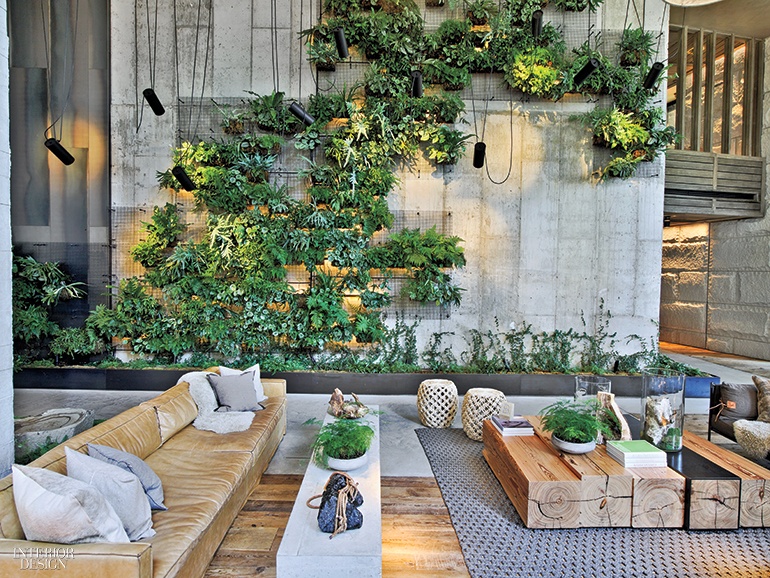Table Of Content

Thermal comfort is subjective, and this principle works by providing variable thermal conditions and airflow within a space, so the occupant can control their thermal comfort by moving around a space. Research conducted by Heerwagen (2006) indicates that humans prefer moderate levels of sensory variability, including variations in light, temperature and sound. Environments lacking in sensory variability can reduce productivity and result in boredom. The intent is that the occupants can make adjustments to their comfort level by moving seats (relocating to the sun or shade), and by opening windows. The '14 Patterns of Biophilic Design' is a publication that presents a series of tools for understanding elements of Biophilic Design, as well as the science behind them.
Patterns of Biophilic Design: Nature of the space
Letting natural light flood into buildings and cities is an easy way to create a more natural environment. The aim of this pattern is to stimulate positive cognitive responses through the incorporation of different materials from nature. Materials from nature that are introduced into design are usually partially manufactured and differ from their natural state. Nevertheless, this altercation allows for natural materials to be utilised in more ways, such as in the form of marble bench tops and timer flooring/ wall paneling.
Organic Sheets From Sustainable Bedding Brands (
On the other hand, man-made ones are finite and will therefore run out someday in the near future. But they should also not be too processed and not have any toxic chemicals in them. And of course, keeping blinds and curtains open for as long as possible during the day. We can create the so-called vertical forests or simply add small forested areas throughout cities. Here’s what to know about biophilic design, with some advice from Mumford on how to incorporate it into your home.
Evolved Human-Nature Relationships
As designed ecosystems, some, such as the high canopy forests with floral undergrowth maintained by the annual burning practices of the Ojibwe people of North America, are biodiverse, vibrant and ecologically healthy. Others, such as suburban lawns and golf courses, are chemical dependent monocultures; while beautiful, they are not biodiverse, ecologically healthy or resilient. Biophilic design continues to influence interior decor today, as seen in the rise in the use of the color green, the trend towards indoor-outdoor living, and the return of wood and other natural elements in furnishings and wall treatments.
Thinking holistically about a technology-enabled customer experience will make transit a mode of choice for more people. Adding 3D sound from gaming engines to VR allows designers to represent accurate acoustic conditions to clients during design.
It’s a Jungle Out There: Biophilic Design in the Workplace - Greenroofs.com
It’s a Jungle Out There: Biophilic Design in the Workplace.
Posted: Tue, 03 Oct 2023 07:00:00 GMT [source]
Auditory access and perceived or potential tactile access to water also reportedly reduces stress (Alvarsson et al., 2010; Pheasant et al., 2010). When an individual experiences thermal discomfort, he or she will likely take action to adapt (e.g., put on a sweater; move to a different seat; submit a complaint). Sometimes these adaptive actions are simply in response to dynamic changes in personal preference. In order to create an enhanced thermal experience, conditions do not have to reach the point of discomfort for these opportunities for changing the thermal conditions to create a positive experience (Brager, 2014). According to Attention Restoration Theory, elements of “soft fascination” such as light breezes or other natural movements can improve concentration (Heerwagen & Gregory, 2008; S. Kaplan, 1995). Micro-restorative experiences might include moments of sensory contact with nature through a window, television, image, painting or an aquarium.
3 Nature of the Space

The hospital also uses transitional spaces to make occupants more connected to the outdoors and has organized complexity throughout its overall architectural design. KTP has created a sense of place for occupants and neighbors, as it acts as a communal place for both those who work there and live nearby. By definition, biophilic design promotes wellbeing by incorporating elements that establish a coherent relationship between nature, human biology, and the building physically, visually, and emotionally.
Patterns of Biophilic Design: Natural Analogues
Aidlin Darling Design's new retreat for Expedia Group is a futuristic, biophilic building in Seattle, where form follows ... - Global Design News
Aidlin Darling Design's new retreat for Expedia Group is a futuristic, biophilic building in Seattle, where form follows ....
Posted: Mon, 09 Oct 2023 07:21:20 GMT [source]
The purpose of this design pattern is to trigger responses relating to problem solving skills, curiosity, and risk assessment skills - developed during our childhood. Mystery is the promise of more information achieved through partially obscured views or other sensory devices that entice the individual to travel deeper into the environment. A space with a good Refuge condition feels safe, providing a sense of retreat and withdrawal – for work, protection, rest or healing – whether alone or in small groups. A good refuge space feels separate or unique from its surrounding environment; its spatial characteristics can feel contemplative, embracing and protective, without unnecessarily disengaging.
“Letting natural light and fresh air into your home is the simplest way to invite nature into your interiors,” says Barnard. You might also install motorized shades and program them to go up and down at certain times of day, varying natural light levels. The shades will also curb energy costs by either reducing or increasing solar heat gain, depending on the season. Take advantage of every way you can incorporate natural light into your home, like large windows and skylights, if possible. Additionally, biophilic design helps capture and incorporate those moments that are indescribable, something that is often seen and felt in nature, says Nicole Lanteri, owner of Nicole Lanteri Design.

Biophilic design is the idea that “the presence of natural, outdoor elements like plant life provide measurable benefits to our mental and physical well-being,” says Carr. Enter biophilic architecture, living spaces that connect occupants more closely to nature. “People are craving natural elements in their homes and workspaces to create balance,” says Laurence Carr, a New York City-based interior designer and nominee of the 2019 ASID Design for Humanity Award. Contemporary art and design have embraced the concept of Biophilia with open arms. This holistic approach blurs the lines between the natural world and human-made environments, giving rise to innovative creations that fuse sustainability, aesthetics, and functionality. Artists and designers today draw inspiration from the intricate patterns of nature, integrating elements such as living walls, sustainable materials, and biomimetic forms into their work.
Connect indoor and outdoor living areas to create an easy flow between your home and nature to enhance biophilic design. Consider installing sliding doors that you can open to unite your living room with an outdoor patio. A balcony off your bedroom or a deck that connects to your kitchen are other luxuries that can make nature feel like an intentional part of your home's decor. The award is in recognition of achievements in the built environment, including buildings, interiors, and communities, that demonstrate the principles and benefits of biophilic design.
At the very least, open your windows on temperate days to breathe in the fresh air and listen to the sounds of the rain, wind, or birds outside. When it's too hot or cold for open windows, simply pulling up the blinds or drawing the curtains can boost your mood by letting in daylight and offering a glimpse of the outdoors. Biophilic design was called out in Pinterest's 2022 trend report, which noted significant spikes in search interest for the term, and it's a buzzword you'll still hear today from experts across the design industry. After too much time defined mainly by pandemic-driven isolation and anxiety, creating soothing spaces that bolstered our health and well-being was perhaps more critical than ever during those years. The concept comes from the term biophilia, which refers to the human tendency to interact with other forms of life. In design, it means creating a sense of harmony between your home and the world outside.
The idea that humans have an intrinsic biological connection with nature might seem obvious. However, modern life has seen a gaping disconnect between humans and the natural environment. Increasing the biophilic design of your home will coincide with a wide range of scientifically proven health benefits. Shop now for quality home furniture to increase the natural-feel of your home or office space. Another distinguishing feature of biophilic design is its emphasis on the overall setting or habitat and NOT a single or isolated occurrence of nature. All organisms exist within connected and related environments bound together as integrated wholes or ecosystems.

No comments:
Post a Comment